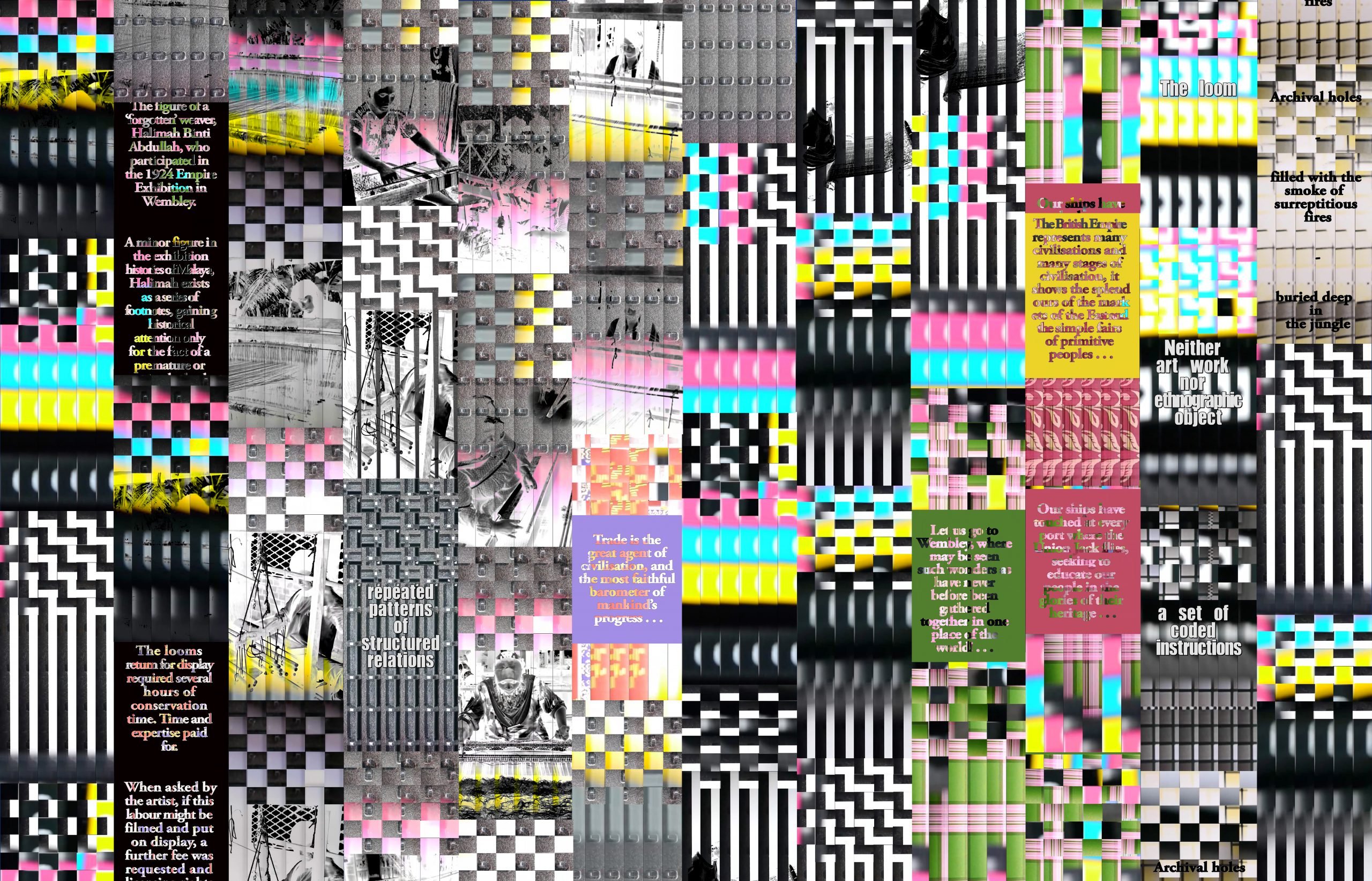APA JIKA, The Mis-Placed Comma
2017 - Film & Video (Film & Video)
8:26 minutes
Erika Tan
APA JIKA, The Mis-Placed Comma is one of three works Erika Tan filmed within exhibition spaces during the final stages of their transition from colonial period law courts to the National Gallery Singapore. Part of an on-going body of work, this video focuses on the figure of a forgotten weaver, Halimah Binti Abdullah, who participated in the 1924 British Empire Exhibition in the United Kingdom. A minor figure in the exhibition histories of what was formerly known as Malaya (today, Singapore and Malaysia), Halimah exists as a series of footnotes, gaining historical attention only for the act of a premature death from pneumonia, in London and away from home. Her remains are located in an unmarked grave in Woking. Amongst the collections held at the Victoria & Albert Museum an incomplete textile on an incomplete loom may be the only record of Halimah’s last creative act. As a weaver, her participation, or mode of operation in the Empire Exhibition , was arguably two-fold. She was both textile weaver, and also producer of the image of the “Malay woman”. Tan’s work calls into question the place of the artist and that of grand exhibitions, invoking the form of ‘debate’ as a framework for the discussions around Halimah’s relevance in a national institution, currently engaged in postcolonial reframing of modernism. The work is situated in a former colonial law court, in a country where open debate and freedom of speech is highly monitored. Today, it houses a permanent display of Singaporean art under the heading Siapa Nama Kamu? (“What is your name?” in Malay), overtly placing a struggle for identity at the heart of its narrative . Taking the form of a filmic journey, APA JIKA (What if?) can be seen as an attempt to insert Halimah into the developing discourses of modernity and Singaporean art canonization for which the National Gallery Singapore is becoming symbolic. Today, there is no work present by Malay women artists in the National Gallery Singapore, however, the Malay female body as an image fills the gallery walls. As such, the film explores Halimah’s status as both subject and object and possible forms of repatriation that might occur by weaving together both past and present to challenge received narratives and produce space for discussion.
Erika Tan’s practice is primarily research-driven with a focus on the moving image, referencing distributed media in the form of cinema, gallery-based works, Internet and digital practices. Her work starts from reviewing museum collections and objects, mainly using moving images with digital, Internet, and cinematic forms. Tan explores detailed facts and archival evidence with an anthropological approach to archival research, correlating history as expressed through artistic representations, embedding figures from the past into contemporary art context. Tan’s practice proposes the idea of digital repatriation of museum objects between Southeast Asia and Britain, the meaning of artist as a representative, and female roles from the British colonial period in contemporary contexts. By dislocating the subject and object from historical records, Tan’s work fills the gap in histories and bridges separate worlds.

